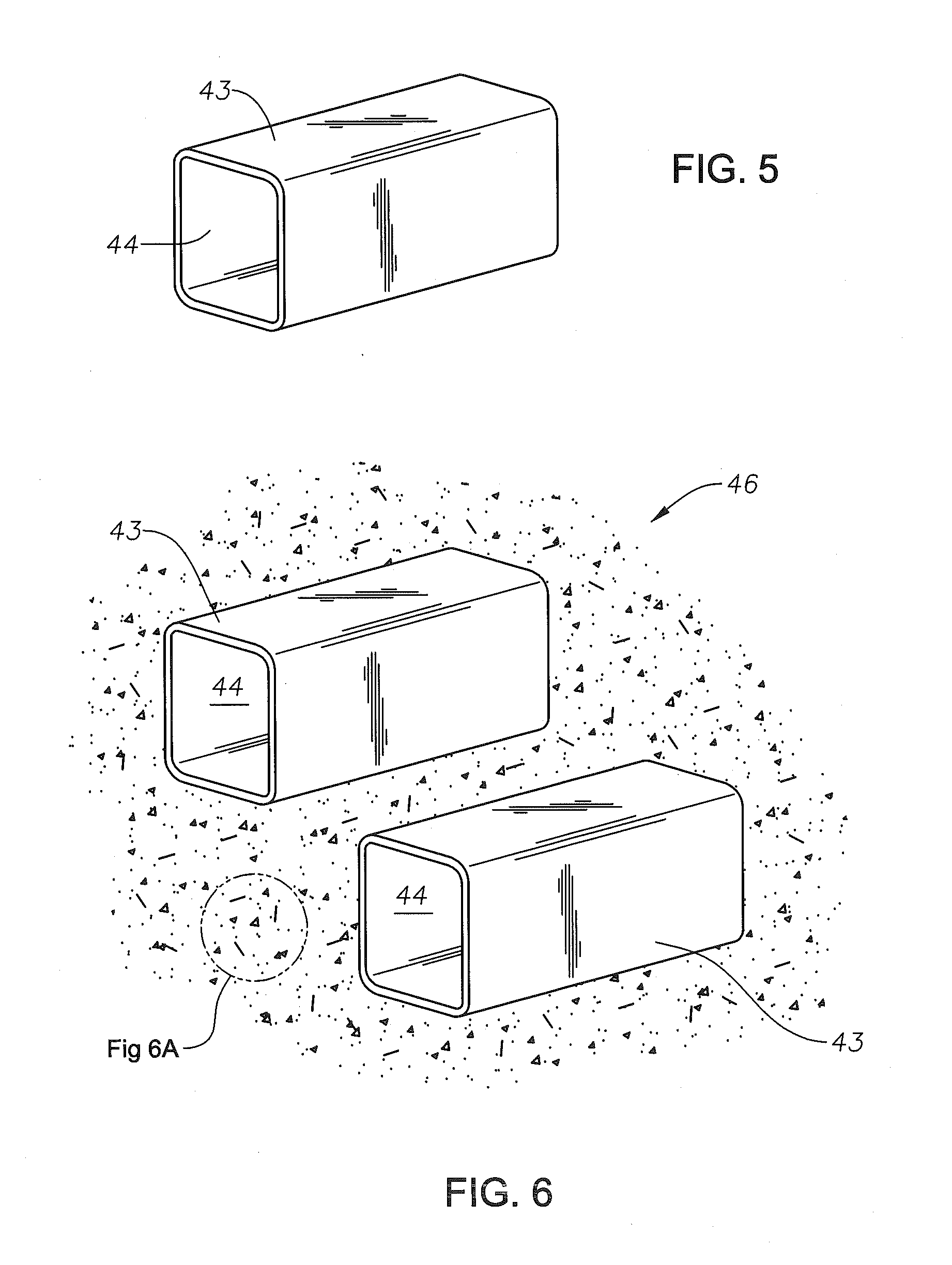Ultra High Temperature Environmental Protection Coating
a technology of environmental protection and ultra-high temperature, applied in the direction of heat reducing structures, machines/engines, efficient propulsion technologies, etc., can solve the problems of insufficient oxygen sealing of high-temperature epc's at ambient, insufficient oxygen sealing of high-temperature epc's, and inability to improve efficiency
- Summary
- Abstract
- Description
- Claims
- Application Information
AI Technical Summary
Benefits of technology
Problems solved by technology
Method used
Image
Examples
example 1
[0052]In one non-limiting example, platelets are formed having a nominal 15-20 micron thickness, and with a greater than 10:1 diameter / thickness ratio. Mixed together are LLC CSO-390 hot melt carbosiloxane preceramic polymers (100 pph) (available from Extreme Environment Materials Solutions, 49 Geyser Road, Saratoga Springs, N.Y. 12866, 518.450.1055); acetone (150 pph); BF 17 0.5 micron SiC powder (100 pph) (available from HC Stark, http: / / www.hcstarck.com / en / home.html); and 43 nm ZrB2 powder (70 pph) (available from EPRUI Nanoparticles and Microspheres Co. Ltd., No. 188 Luhe Chemical Industry Zone, Nanjing, China, 86-21-60346644). This mixture is then put into a ball mill with 1.5 mm alumina media (400 pph) and milled for 12 hours at 50 rpm (or rpm sufficient for active tumbling). After ball milling, the mixture is drained through a filter, rinsed, and vacuum degassed with a solvent to produce a resin mixture. Release coating 700NC (available from Henkel FreKote) is applied to an e...
example 2
[0053]The following is a non-limiting example of forming a mold for the shells 43, 43A. A mold is used that is an elastic female replication of an etched Si master. A silicon master, available from SPTS Technologies Deep Reactive Ion Etching, 7377 William Ave, #800, Allentown, Pa. 18106, (610) 336 0314, is used for producing the 1.5 micron by 1.5 micron array of square ridges of the male tool at a spacing of 125 micron. The master is release coated with a dilute (1%) solution of detergent and dried at 85° C. overnight under >750 mmHg vacuum. The master is adhered to a larger tool plate, edge sealed with Viton® rubber and placed inside a vacuum chamber with a port to introduce a casting resin onto the mold while under full vacuum. The mold is produced using UV-PDMS KER-4690-AB silicone (available from Shin-Etsu, Asahi Seimei Otemachi Bldg., 6-1, Ohtemachi 2-chome, Chiyoda-ku, Tokyo 100-0004, Japan). Equal parts of A and B are mixed thoroughly at room temperature and degassed at full ...
example 3
[0054]The following is a non-limiting example of forming the shells 43, 43A where the silicone mold is cleaned, release coated with the Henkel FreKote 700 NC and adhered to an aluminum tool plate. An excess volume of SC-1008 phenolic resin (available from Hexion 180 East Broad Street Columbus, Ohio 43215) is poured onto the mold surface to fill the female trenches; manually distributing the resin with a squeegee or roller. Edge dams, made of SM 5153 sealant tape (available from ITWWIND Group, http: / / www.itwwind.com) or silicone rubber, are applied to retain resin in the mold. The filled mold is covered with 12.5 micron thick Teflon® film (available from DuPont, DuPont High Performance Films, Route 23 South and DuPont Road, Circleville, Ohio 43113, (800) 967-5607) thin non-woven breather (AirTech N4 or equivalent) and nylon bagging film. Vacuum ports are installed in the bag, it is sealed with SM 5153. The phenolic resin is cured under full vacuum. The cure is accomplished in stages,...
PUM
| Property | Measurement | Unit |
|---|---|---|
| Temperature | aaaaa | aaaaa |
| Temperature | aaaaa | aaaaa |
| Length | aaaaa | aaaaa |
Abstract
Description
Claims
Application Information
 Login to View More
Login to View More - R&D
- Intellectual Property
- Life Sciences
- Materials
- Tech Scout
- Unparalleled Data Quality
- Higher Quality Content
- 60% Fewer Hallucinations
Browse by: Latest US Patents, China's latest patents, Technical Efficacy Thesaurus, Application Domain, Technology Topic, Popular Technical Reports.
© 2025 PatSnap. All rights reserved.Legal|Privacy policy|Modern Slavery Act Transparency Statement|Sitemap|About US| Contact US: help@patsnap.com



